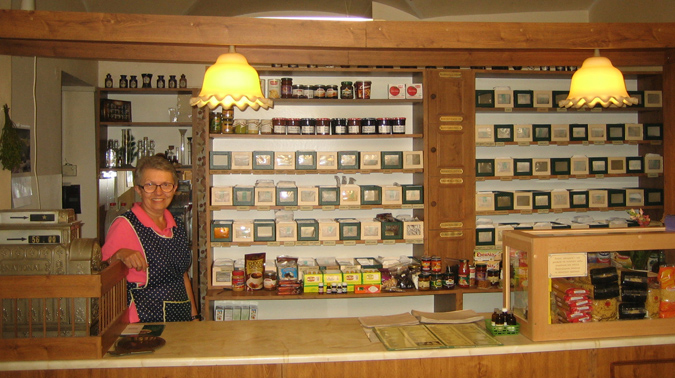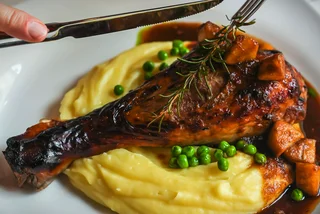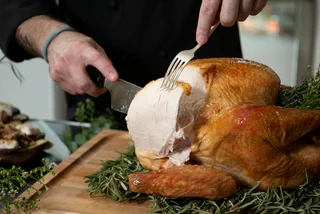Until now, we’ve covered the basics of food: meat, cheese, bread, dairy products. But these alone won’t make a meal. You need flavoring.
The spice section in your local Czech supermarket might not be quite as comprehensive as those found in the US and UK, but you will find many of the more widely used herbs and spices, both dried and fresh.
Traditional Czech Herbs and Spices
While people debate what are today’s typical Czech herbs and spices, certain flavors crop up again in many of the nation’s signature dishes.
Pepper, as in the spice from peppercorns, is pretty universal and not unique to Czech cooking. You’ll find powdered black pepper (mletý černý pepř) on the table of most restaurants and homes. You can also buy it as corns (celý černý pepř). It is also possible to get white pepper (bílý pepř) and green pepper (zelený pepř). In some of the old-style canteens, the pepper is often served in a bowl which you take with your fingers. More modern restaurants have a pepper shaker (pepřenka).
Caraway could well be one of the most common Czech spices. It’s used in breads, to flavor boiled potatoes, and there is even a caraway soup (kmínová polévka). The seeds are available whole (celý kmín), crushed (drcený kmín), or as powder (mletý kmín). Note: not to confuse with cumin (římský kmín).
Allspice (nové koření) is also quite popular. It is often used whole in soups, such as potato soup, and in sauces such as rajská omáčka. The ground version is used for cakes and other baked goods.
Paprika, or dried peppers, are also readily available. You can buy both sweet (sladká paprika) and hot (pálivá paprika). The term sweet is a bit of a misnomer. It’s not really sweet, just mild. Paprika is the key spice in goulash and goulash soup. It’s also popular for marinating meat for the grill.
On the subject of grilling, no Czech barbecue would be complete without mustard and horseradish. Local mustard (hořčice) comes in two varieties: křemžská, which is seeded, and plnotučná, which is the smooth unseeded. Neither is very hot. Horseradish (křen) is the ideal accompaniment to sausages and ham. It comes finely grated in jars (strouhaný křen), or you can buy the root whole in the vegetable section.
Juniper berries (jalovec) are more often associated with gin, but they are used in some Czech dishes. Its distinctive sharp taste is often used with game meat.
REMOTE (EEA) Software Engineer – IntelliJ&n...

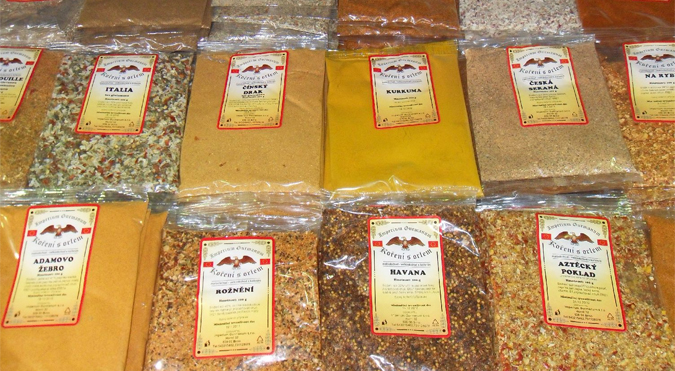
Imperium Gurmanum
Seasonal Aroma
Christmastime involves many spices, and if you know someone who bakes, then their house will be filled with the heady aromas of allspice, nutmeg, and ginger.
Ginger (zázvor), which can be bought as the fresh root or as dried powder (mletý zázvor), might not be the first spice you associate with Czech cuisine. But it is the basis of perník – gingerbread – and a reference to it appears in Cimrman’s Hospoda na Mýtince. (Šla do města, pro šafrán a trochu toho zázvoru – She went to the town for saffron and a little ginger.)
To make mulled wine (svařák), you’ll need cinnamon (skořice), cloves (hřebíček), star anise (badyán), and nutmeg (muškátový oříšek). These spices can be found in most stores. Of course, they are not only used in mulled wine.
Staying Fresh
Some herbs are almost always sold fresh. The leaves and the root of parsley are both used and sold under the name petržel. The leaves can also be known as listová petržel or kudrnka. The root is often used as the basis of soups and sauces.
Dill (kopr) is popular herb, used to flavor sauces (koprová omáčka) and to pickle cucumbers. You can usually get the fresh herb in a greengrocer’s store. In a pinch, you can always buy frozen dill in the supermarket (mražený kopr). But if you have enough room in your garden, try growing it: it seems to do quite well in this climate.
Mint (máta) is sold in bunches, often wrapped in the vegetable section. It’s main use locally seems to be in fresh mint tea.
Chives are known as pažitka or šnytlík. You can usually by a small pot of them from a nursery, so you can snip them as you need. They’ll survive most of the summer on a balcony.
Mediterranean Temptation
The most widely used herb of Mediterranean origin would have to be the bay leaf (bobkový list). It’s distinctive aroma is used to enhance soups and sauces. It may also be added to pickled cheese (nákladaný hermelín) or picked sausage (utopence) to give it a stronger flavor.
If you’re looking to cook up some spaghetti sauce, make a pizza, or jazz up a piece of lamb, you’ll be able to find the basic herbs. Oregano is sold as oregano. Its close relative marjoram is sold as majoránka. Basil is bazalka. Thyme you will find under tymián and rosemary as rozmarýn. The latter is not as readily available in the stores as the others.
Fresh herbs are not so readily available. Basil is sometimes sold as a potted herb in the supermarket, and you may find in a grocer’s or at plant nursery. Because of the climate, neither plant will grow well in normal conditions here.
If you’re looking for fennel, you will find it sold under fenykl both for the seeds and the plant.
Getting Spicy
If you’re looking to prepare Asian meals, you’ll find certain basic ingredients such as ginger and curry powder (kari). But for many spices you’ll have to venture out to some specialty stores (see the end of the article.)
Coriander, or cilantro (koriandr), can be bought fresh, though you’ll usually find it a specialty food store. Koriandr is also the term for the seeds, which are available as whole or powder, and you’ll probably have to check out an Indian specialty store for it.
Turmeric is sold under the name kurkuma and is mostly available in powdered form.
Specialty Stores
For Indian and South Asian herbs and spices, there are two places in Prague 3: Lahore at Husitská 34 or Shalamar Foods at Lipanská 3. The owners of both stores can give you tips on what to buy.
Thai’s Asian Food Store at Francouzská 66 is the go-to place for cilantro, lemon grass, and the essentials of Southeast Asian cuisine. Apart from herbs and spices, they have a range of sauces, oils, noodles and whatever you might want from Asia. You can also try the stores in the Malešice and Sapa markets, though they’re not so conveniently located.
Tucked away a little from the Vltava is the quaint Prodejna u Salvátora. Walking into the store is like getting a noseful of the world at once. The owner is friendly, and shopping there recalls an earlier time when you ordered directly from the shopkeeper.
Hopefully, hunting down spices in Prague won’t feel like a journey around the world.
Useful vocabulary
black pepper – černý pepř
white pepper – bílý pepř
green pepper – zelený pepř
caraway – kmín
cumin – římský kmín
allspice – nové koření
dried peppers (paprika) – sladká paprika (sweet), pálivá paprika (hot)
horseradish – křen (grated – strouhaný)
juniper berries – jalovec
ginger – zázvor (dried powder – mletý zázvor)
saffron – šafrán
cinnamon – skořice
cloves – hřebíček
star anise – badyán
nutmeg – muškátový oříšek
mace – muškátový květ
parsley – petržel(ka)
dill – kopr
mint – máta
chives – pažitka, šnytlík
bay leaf – bobkový list
marjoram – majoránka
oregano – oregano
basil – bazalka
thyme – tymián
rosemary – rozmarýn
fennel – fenykl
curry powder – kari
cilantro – koriandr
turmenic – kurkuma
What are your tips on herbs and spices in the Czech Republic?
Related articles












 Reading time: 6 minutes
Reading time: 6 minutes 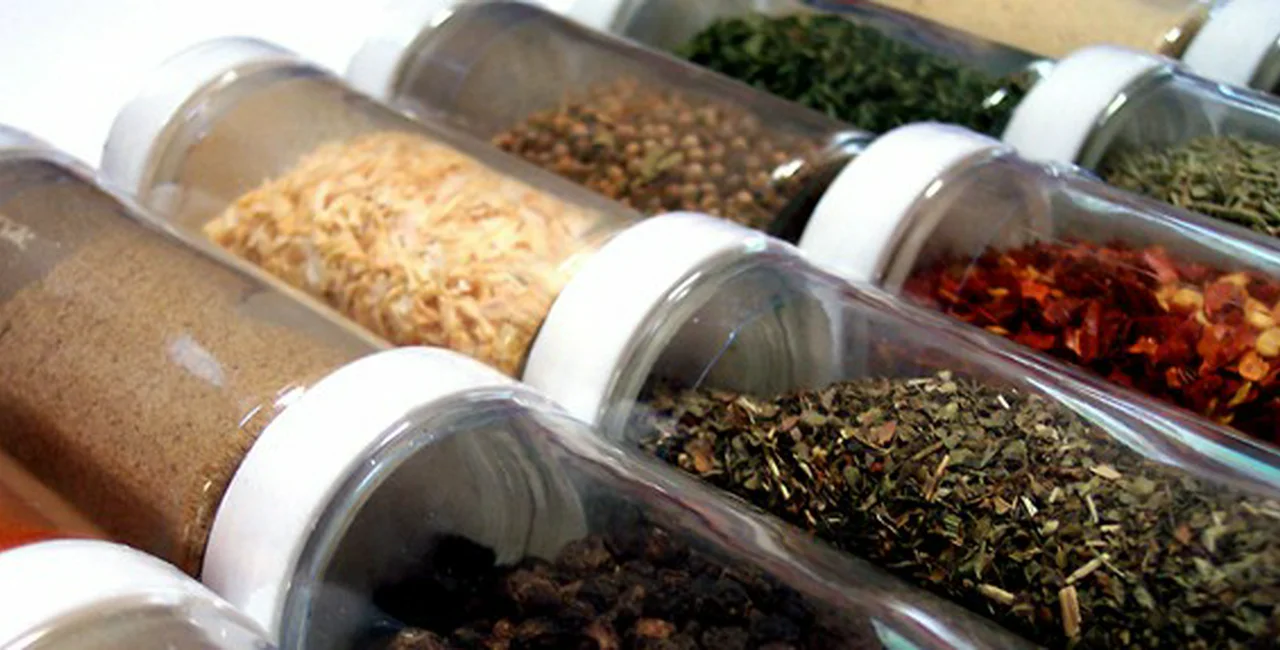

 Swedish
Swedish
 Finnish
Finnish
 Danish
Danish
 Norwegian
Norwegian
 French
French
 Polish
Polish


